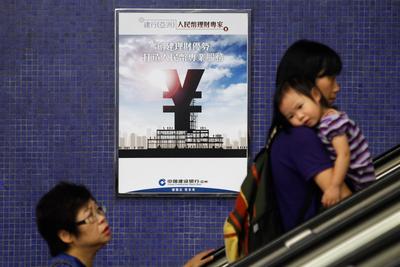This is not the first time the US has labelled China as a currency manipulator guilty of crippling US exports and stalling US jobs growth. We have heard this song many times, and the latest Senate bill is no more than an additional verse. This time, however, increasing public discontent over sluggish economic growth has ignited tensions which have culminated in disgruntled members of the public participating in the ‘Occupy Wall Street’ protests — and increased attention in Washington.
If this bill passes into law it will force the US Department of Commerce to impose high import tariffs on Chinese products to add the value to goods that, lawmakers believe, the yuan should already be adding. A trade war looks more likely than ever — something the rest of the world would prefer to avoid. And the reason for this is simple. The Chinese economy relies on offshore markets and its trade volume accounts for two-thirds of its GDP, much larger than the US’ one-fourth. Once the US imposes high import tariffs, many Chinese exporters will shut down, almost guaranteeing social unrest. And there is little chance that Beijing will take this lying down.
The yuan has already appreciated by more than 20 per cent since July 2005. A 10 per cent appreciation in the yuan’s value reduces Chinese exports to the US by 16 per cent. So, the recent 20 per cent appreciation has reduced the US trade deficit with China by 32 per cent.
Whether appreciation of the yuan can help the US job market is far less clear-cut. True, a stronger yuan means less Chinese imports to the US. But the US will still have to import the bulk of its labour-intensive products, such as textiles, from somewhere else — most likely from Indonesia, Vietnam or Malaysia. A more expensive yuan will simply change the nationality of sweatshop labourers, not revitalise the US job market. Americans are still not making their own clothes, for example, but US consumers will pay a premium for brands such as Nike, Gap and American Apparel to outsource their productions. Many Chinese goods enjoy a stranglehold on the US market simply because they are cheaper than similar products with equal quality from smaller countries.
And processing trade — where Chinese manufacturers buy raw materials or components from other countries for processing or assembly before exporting the finished products to industrialised nations — accounts for more than 50 per cent of China’s export revenue. In 2010, China’s entire US$180 billion trade surplus came almost exclusively from processing trade, despite the narrow profit margins.
The answer to US trade woes is not to reduce imports from China, but to increase exports. Jobs will not be created in the US simply by shutting down developing economies — only US firms can create US jobs. More US imports would also benefit China, taking the heat off Beijing’s US$3.2 trillion in foreign exchange reserves by reducing a massive and unsustainable trade surplus and reducing inflation. Nobody wins in a trade war. But the US can turn this situation to its advantage by revitalising the manufacturing sector that made the US the world’s number one economy. Only positive action of this kind will keep it there.
Miaojie Yu is an Associate Professor at the China Center for Economic Research, Peking University.

